Ever wondered what size generator you need to keep your home powered during an outage?
You’re not alone! We’ve got you covered with an easy-to-follow chart to help you choose the perfect generator for your needs.
Stay powered up and prepared, no matter what Mother Nature throws your way!
Generator Size Recommendations
| Category | Wattage Range | Suitable For | Recommended Generator |
|---|---|---|---|
| Basic Needs | 3000-5000 Watts | Essential appliances like refrigerators, lighting, and small pumps | Generac 3000 Running Watts Generator |
| Most Household Appliances | 5000-7500 Watts | A broader range of appliances including dishwashers, dryers, and medium-sized air conditioners | Westinghouse Power 6000 Running Watt Portable Generator |
| Whole House Coverage | 10,000-20,000 Watts | Comprehensive usage including large air conditioners, heating systems, and multiple large appliances | DuroMax XP15000EH Dual Fuel Portable Generator |
Detailed Appliance Power Requirements
Understand the power requirements of common household appliances:
| Appliance/Use | Running Watts | Starting Watts |
|---|---|---|
| Refrigerator/Freezer | 700 | 2200 |
| Sump Pump (1/2 HP) | 1050 | 2150 |
| Microwave Oven (1000 Watts) | 1000 | 1000 |
| Dishwasher (Cool Dry) | 700 | 1400 |
| Television (LED) | 100 | 100 |
| Lighting Circuit (10 bulbs x 60W) | 600 | 600 |
| Laptop | 50 | 50 |
| Home Air Conditioner (1 Ton) | 1500 | 4500 |
| Electric Water Heater (40 Gallon) | 4000 | 4000 |
| Clothes Washer | 500 | 900 |
| Clothes Dryer (Electric) | 5400 | 6750 |
| Heating System (Electric Furnace) | 18000 | 27000 |
| Cooking Range | 2150 | 2150 |
| Hair Dryer | 1250 | 1250 |
| Garage Door Opener (1/2 HP) | 875 | 2350 |
| Well Pump (1/2 HP) | 1000 | 2100 |
Overall Recommendation
We recommend the Westinghouse Power 6000 Running Watt Portable Generator to power most household appliances effectively. This generator is ideal for handling various appliances, from dishwashers and dryers to medium-sized air conditioners, ensuring your home remains fully functional during power outages.
What Size Generator Do You Need For Your House?
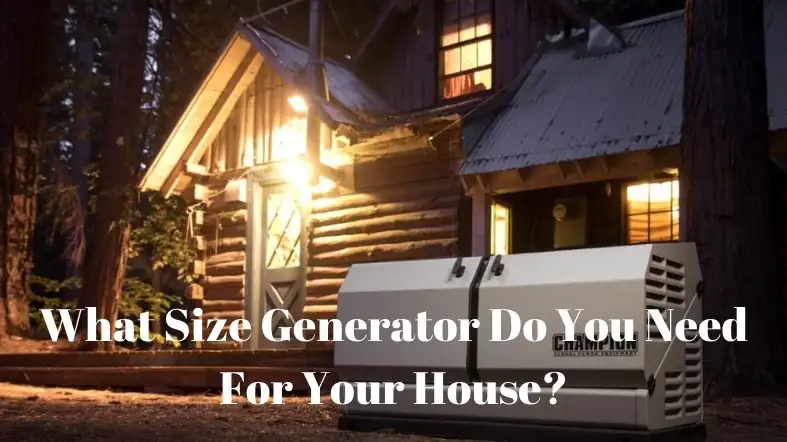
It depends on how much electricity you need. Basically, the more electricity you need, the bigger your generator will have to be.
How Many Watts Do I Need to Run the Whole House?
Check the chart:
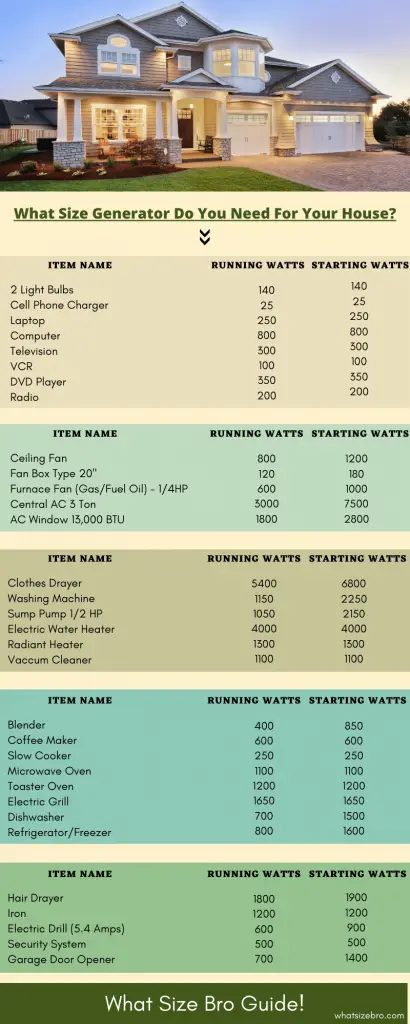
Check Our Generator Size Calculator. It’s easy to use & you can calculate by yourself.
How Much Electricity Do I Really Need?
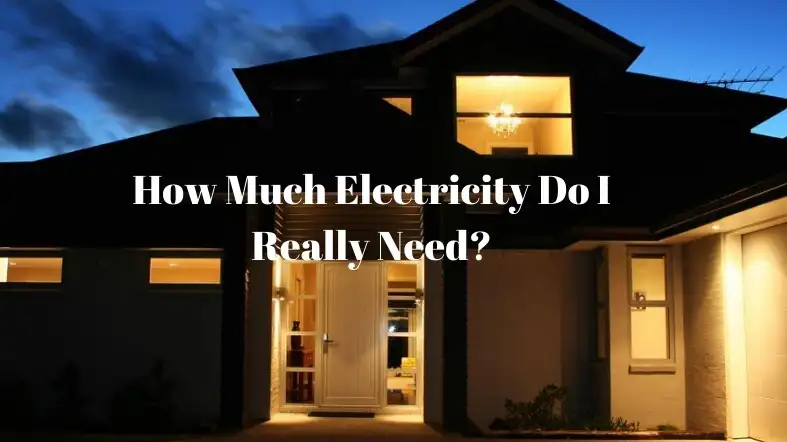
The amount of electricity you need varies for each person and their needs.
For example, if someone has a small home with few electronic devices they’ll probably only need 100 kWh per month to run everything on.
If that same individual is living in a larger home or using more electronics, the number will go up significantly.
It’s hard to pinpoint an exact answer since it varies from person to person.
The amount of electricity you need is determined by a few different factors, such as the size and number of electrical devices in your home.
To find out how much power you really need, start with these tips:
- Determine what kind of equipment you use
- Estimate how many hours you’ll use each device per day
- Keep track of your power usage for a month or two
- Figure out your average power usage.
Putting all of this together, you’ll be able to find out how much electricity you need for the household and electronics in your home.
>> What generator size for a pop up camper?
Determining Your Wattage
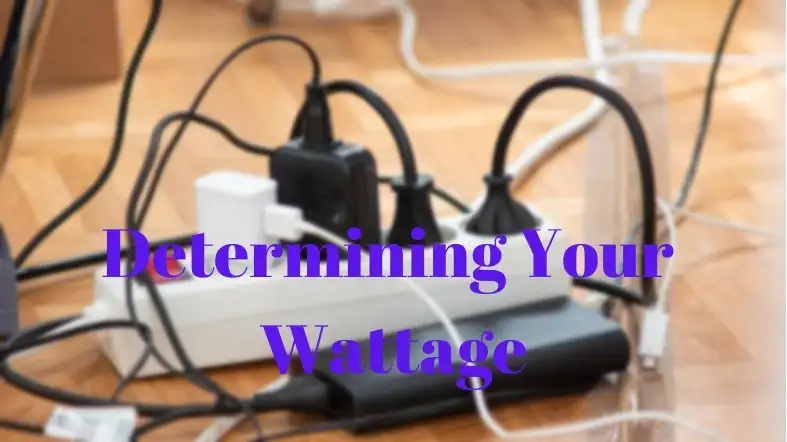
Needs
The first step to determining what size generator you need is identifying how many watts your appliances use in a given day.
Use the chart below, or consult with the manufacturer of your appliance, to find out its wattage needs.
If there’s no information on them and they’re not plugged into an external power source like a wall outlet or surge protector, then just assume that they use a standard amount of power in your area.
>> What size generator for a microwave?
Appliance Wattage Needs:
#Refrigerator: 1000 watts or less per day depending on the number and size of doors (most average about 1550 to 1800 watts).
#Dishwasher: 600 – 800 watts; varies based on what cycle you choose.
#Clothes Dryer: 1800 to 2000 watts depending on whether it’s gas or electric and the type of clothes you’re drying; a standard load is about 11 kilowatts per hour, which would be 1200 to 1500 watt hours (a single shirt when dried can use around 200 watt hours).
#Air Conditioner: 3000 to 5000 watts depending on what cooling setting you’re using.
#Toaster Oven or Microwave: 1000 to 1500 watt hours per day.
#Hairdryer or electric shaver (using the low power, cool air only setting): 200 watts for a typical use of 30 minutes.
#Electric dryer: 8000 to 10000 watt hours per day.
>> What size generator for a space heater?
Approximate Usage for Electricity:
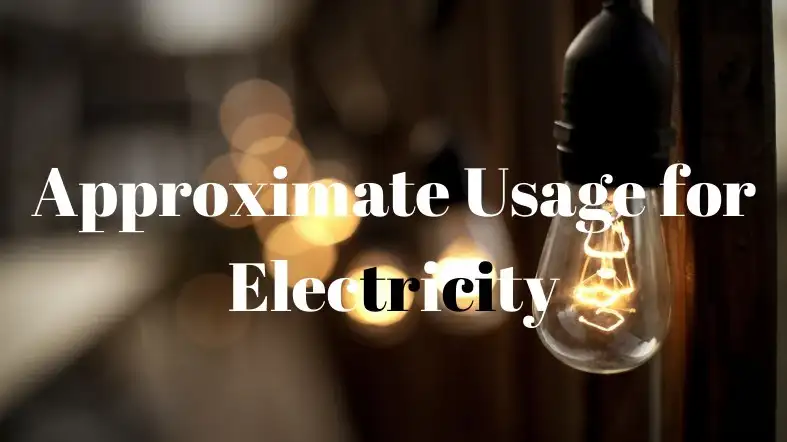
An average generator can produce between 2000 and 3000 watts of power.
This will provide enough electricity for a small air conditioner, an electric stove or oven, some lights, and several other appliances at the same time.”
“Most generators come with four outlets that are typically rated at 2000 watts.
You may want to purchase a generator with more outlets, but the number of amps you need will depend on what appliances you plan to use.”
>> What generator size for 13500 btu ac?
How many Amps do common appliances use?
To calculate how many amps you need to power your appliances, divide the wattage by 120 and then multiply that number by the voltage (120 volts in North America).
– If a load calculation says it needs 2400 watts of power at 240 Volts, this means the appliance requires 36.00 amps of power to operate.
– If you need 220 volts, then it will be 30 amps and 110 volts is 22 amps.
– 240 Volts for an air cleaner would mean 18 amp needs to come from your generator – but this calculation does not take into account any additional appliances in the building.
– If you have a large air purifier, it may need 30 amps.
The rule of thumb is that the total number of watts required by all appliances in your building should not exceed half the capacity rating (wattage) of your generator.
For example: if you are looking for a 5000-watt generator and the total power requirement of all appliances is 2000 watts in your building, then you will be good to go with a 5000-watt generator.
However, if the total power requirements are 3000 watts or more, you should probably get an 8000-watt generator because it has greater capacity than what you need as this could help reduce brownouts and blackouts when there is an unexpected increase in power demand.
If you have appliances that are not frequently used such as a pool pump, some additional people who visit your home, or if you’re running other appliances (like air conditioning) at the same time then it is important to take these things into consideration when calculating what size generator will be suitable for your setup.
If your house has a pool, and you use it on the weekends throughout the summer (or if you’re lucky enough to live in Phoenix), then this will increase what size generator is needed because of the additional load.
When figuring out how much power your home requires for appliances, keep in mind that an air conditioning unit needs a lot of electricity.
If your house has an air conditioning unit, then you’ll need to calculate what size generator is appropriate for the amount of power it draws and how many hours a day you want it to run (generators have maximum load limits).
Your appliances might require more or less energy depending on what they’re being used to power, which is why knowing what size generator you need for your house will vary from person to person.
The average power usage in the United States is about 800 watts per hour (W/h) or 100 W continuously, so if your home needs a total of 500 kilowatts over an eight-hour time frame and it has appliances that use a total of 400 W/h, then you’ll need to purchase two generators.
What a Generator Can Power?
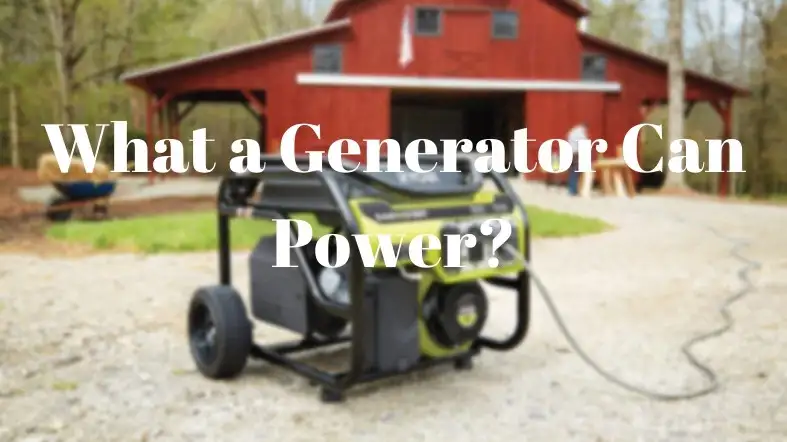
Generators can power lights, refrigerators, and some electric stoves.
Some generators have a built-in inverter that allows them to run televisions, microwaves, and other appliances.
A generator will not be able to power an air conditioner without the right equipment.
You can also run your dishwasher, washing machine and clothes dryer with a generator.
Some generators also have the capability to power your sump pump and well pumps.
>> What size generator to power 4 ton AC?
How are generators sized?
The size of a generator is determined by the number and type of circuits it will power.
For example, an essential home needs a three-circuit generator to provide enough electricity for lights, heaters and cooking appliances. In general:
A 15 kW unit would be suitable for breadbox sized homes with minimal use.
An 18 kW or 20 kW model should be sufficient to cover everyday living requirements in most households up to four bedroom sizes.
For larger properties (five bedrooms plus) require 25kW generators; while 30kW models are more than capable of powering even large residences with six or more bedrooms.
The size of a generator is also determined by the type and quality of circuits, as well as what appliances you plan to use. For example:
A circuit with three 20 amp outlets would need a 15 kW generator; while one with four 30 amp outlets needs an 18 or 20 kw unit.
Or, if your home has electric heaters that have 240v heating elements – which are more efficient than 120 volt ones many people rely on for space heaters and fireplaces – then it will require at least 25kW power capacity in order to run efficiently all day long without needing refueling.
>> What size generator to power 140 amp welder?
The Types of Generators
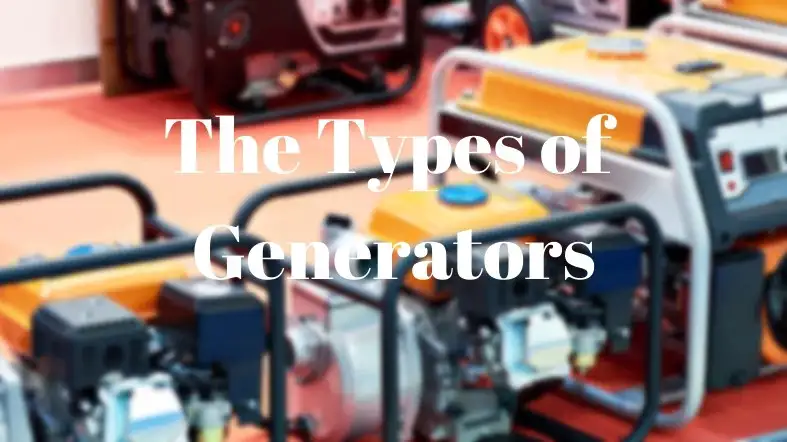
There are three types of generators: standby, prime and portable.
Standby:
Standby is also known as a “home standby” or whole house generator because it provides power to the entire home when utility power goes out.
Prime:
A prime type of generator provides backup power for just one area such as an office building or factory.
Portable:
Portable generators provide short-term electricity during emergencies in places where there is no access to electric service whatsoever.
From natural disasters like hurricanes and floods to construction sites that have lost their connection with the grid over time due to neglectful management practices.
The three types of generators each have different power ratings, which is the amount of electricity they produce at a particular moment.
For example, an average-size home standby generator has a rating that ranges from 5000 to 15000 watts and can typically run for up to 24 hours on one tank of gas before it needs refueling, depending on what type you buy (diesel or gasoline).
Standby generators are more expensive than other types because they’re considered heavy-duty equipment designed for use in extreme situations where there’s no access to grid power and there will be significant demands placed upon them.
Prime generators may offer less wattage but provide enough energy only for critical electrical devices such as lights so construction workers have a place to work safely during emergencies when the power goes out.
>> What generator size for a 3 bedroom residence?
The different generator sizes
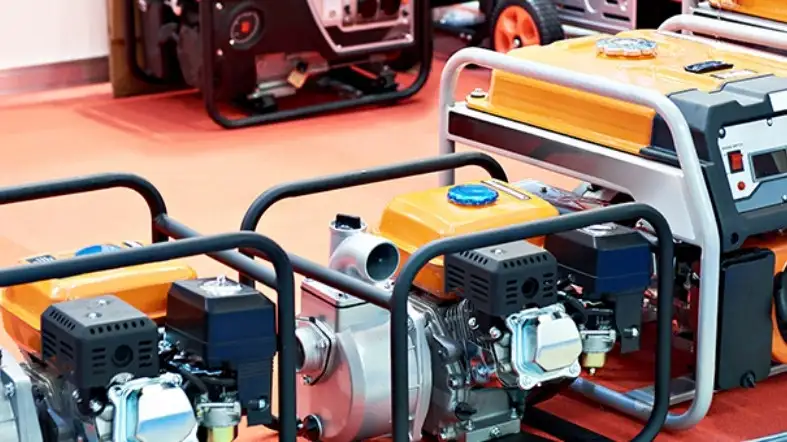
Small – Typically up to 1000 watts of continuous use, or 2000 watt surge capacity.
Medium – Can provide between 2000 and 3000 watts continuously with 4000 watt surges as well.
Typically offer more outlets than small generators for equipment such as microwaves, TVs etc.
Large – Able to provide over 5000 watts continuously (or 7000 if you’re just using it for standby purposes).
These also usually come with an inverter built in so they’re not only supplying backup electricity but powering devices that require AC current all around your home.
>> What generator size to run refrigerator and freezer?
Which type of generator is best to use in a home with solar panels or wind turbines?
An emergency standby generator will most likely be needed by customers who live in rural areas and depend on their sole source of electricity from the grid, as well as those whose homes are not hooked up to either natural gas lines nor have access to alternative sources such as renewable energy like solar panels or wind turbine generators.
Prime generators can also come into play if you intend on using them during extended periods without power – whether its due to an outage caused by high winds, flooding, or other extreme event that takes down transmission wires while knocking off electrical devices connected directly to your homes electrical system.
There are two different types of generators that people might need for their home power needs – either a standby generator or an inverter generator (also known as a grid-interactive).
Inverters can be used in any setting, and they work with the electricity coming from your utilities company to run on clean energy sources such as solar panels or wind turbines.
Standby Generators have both AC outlets and DC plugs to charge batteries so you’re able to generate enough power for lights, refrigeration units, televisions, computers, etc.
But these come at a higher cost than an inverter which is just designed exclusively for charging battery storage systems without having utility connections.
There’s also one more type of emergency backup generator called prime power which is used to power a commercial building.
How to calculate what size of generator is best for my needs?
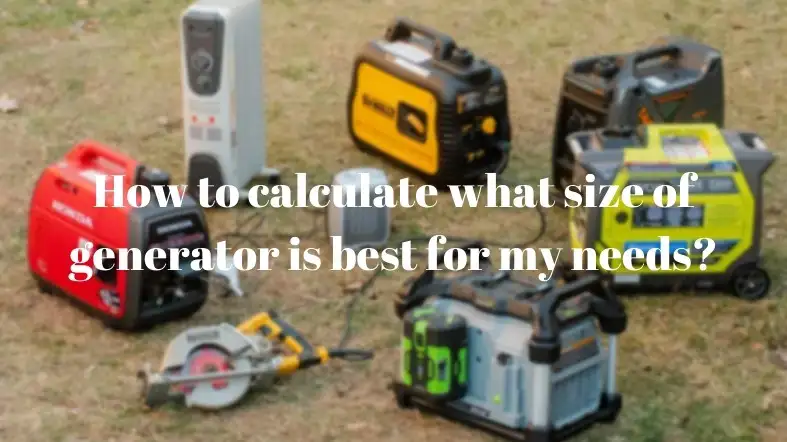
When it comes to what size of generator is best for my home, we always recommend that you consult with an expert.
This way they can properly assess your needs and figure out the right amount needed for long-term use.
There are two factors in determining what size of a generator will be most appropriate: capacity (how much power required) and running time (need more wattage but also need longer hours).
If you plan on using 100% emergency only then we would suggest checking out our 30kW Commercial Standby Generator.
This should provide enough juice if the power goes down! The higher you go in terms of watts and gallons per hour, the heavier these units become so keep that in mind when selecting which one’s best for you.
>> What size generator for 30 amp RV?
How much does a whole house generator cost?
A whole house generator supplies electricity to your entire home and typically can provide enough power for each appliance to run.
It can be installed in the basement or outside and provides electricity from natural gas, propane, or diesel fuel supply.
A whole house generator cost will vary depending on the capacity and size of your home, but can be as low as $5000.
A whole house generator is much more expensive than the typical portable generator, but can save you money in the long term by protecting your appliances from power surges.
It will not work if your home is connected to a town or city grid and uses electricity only during a power outage.
A whole house generator is also not a good option for smaller homes, or renters with less than 1600 square feet of living space.
What features should I look for in a whole house generator?
A stable power source
This means that the generator should be able to provide a steady voltage and frequency.
The most common form of this is alternating current (AC), but some generators also provide direct current (DC).
Having access to both provides versatility with lower AC voltages for sensitive electronics, while DC offers up higher potentials at a similar price.
If your home has solar or wind as its main energy source, then you may want to look into installing batteries in order to store excess electricity during times when there isn’t much sunlight or wind.
Fuel availability
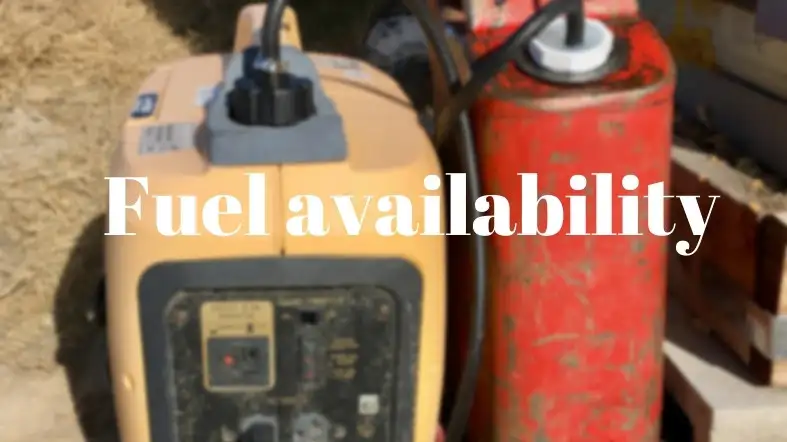
This has to do with what type of fuel the generator will use.
Back up generators need an uninterrupted supply of fuel in order to keep running, and you may want one that can run on anything from natural gas or propane tanks to diesel.
The latter is not as environmentally friendly, but it also offers a higher energy output for more power-hungry appliances like air conditioning units during summer months when demand spikes due to heatwaves.
It’s worth noting that some models are capable of using multiple fuel types which might make them a good choice if your home runs off different sources such as solar panels and oil tanks at varying times.
Size/weight capacity
Small
The smallest generators are typically used to power a few key circuits in an average-sized home.
They’re also better suited for homes with no more than two stories and often include manual transfer switches that limit the areas they can be hooked up.
So it may not cover your entire house if you happen to have three or four floors.
The largest small generator I recommend is from Honda and only weighs about 150 pounds.
Medium
Medium generators are mostly used for smaller homes or in cases where power needs are fairly constant throughout the day, but don’t reach what a large-sized generating unit could provide at any given moment.
These systems also come with automatic transfer switches which eliminate human error and make hooking up your home electrical system relatively easy to do yourself.
A few key circuits in an average-sized home.
They’re also better suited for homes with no more than two stories and often include manual transfer switches that limit the areas they can be hooked up, so they may not cover your entire house if you happen to live in a two-story home.
Medium generators are usually powered by gas, and can generate between 6000 to 8000 watts of electricity at any given moment
Large
Large generators have the capacity for powering more than one circuit (which is what we were talking about with medium sized units).
They’re also equipped with automatic transfer switches as well as manual ones that allow you to hook up your whole house no matter how many stories it has.
These systems come in sizes ranging from 12000 to 180000 watts which means they’ll be able to power anything you throw their way unless there’s an overwhelming need for energy on your property.
Larger homes will typically use these types of generating units because of their higher output and lack of limitations when it comes to what they can power.
FAQs
Will a 7500-watt generator run my house?
Will a 9000-watt generator run a house?
If you plan on running all of your appliances simultaneously during peak hours, then adding an extra 1000 watts of power storage would be a good idea.
Will A 20kw Generator Run My House?
Can A Portable Generator Power Or Run A Whole House?
A portable generator can run lights and air conditioning during short periods of time (up to about 20 hours on 120V).
Can I use a large portable generator to power sensitive electronics?
Portable generator have smaller fuel tanks so they need to be refueled more often, which means it’s not recommended for powering sensitive electronics like computers or televisions because they may experience voltage fluctuations.
Standby generators need to be plugged into the power grid and use larger fuel tanks, which means they are more efficient for powering televisions or computers because of a stable flow of electricity.
What is a whole house generator?
A whole house generator will power the home’s major appliances and ensure that a homeowner can access clean water in an emergency.
Final Thoughts
There are many factors to consider when determining what size generator you need for your home.
The most important factor is how much power (kW) the unit can produce, but there are other considerations as well. For instance, do you want a portable or stationary model?
Do you have space constraints that would limit where the machine could be placed onsite?
What about noise level and fuel type requirements? All of these will impact which size generator best suits your needs.
To get started with your decision-making process, first, determine the number of continuous hours per day that it’s required to run whatever equipment in question – this should provide an idea of how large a system might be needed.
If you need a generator for your home, we recommend the Honda 7000-watt model.
This is an excellent choice because it has enough power to run essential appliances and devices that may be needed in emergencies.
It also comes with an automatic voltage regulator that protects against overloading and starting problems caused by fluctuations on the grid due to storms or other events.
